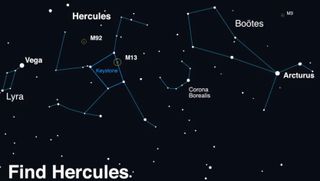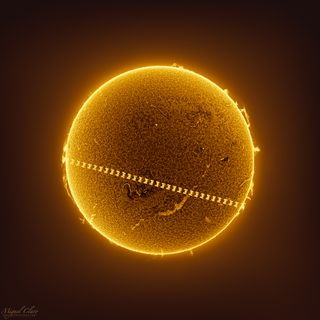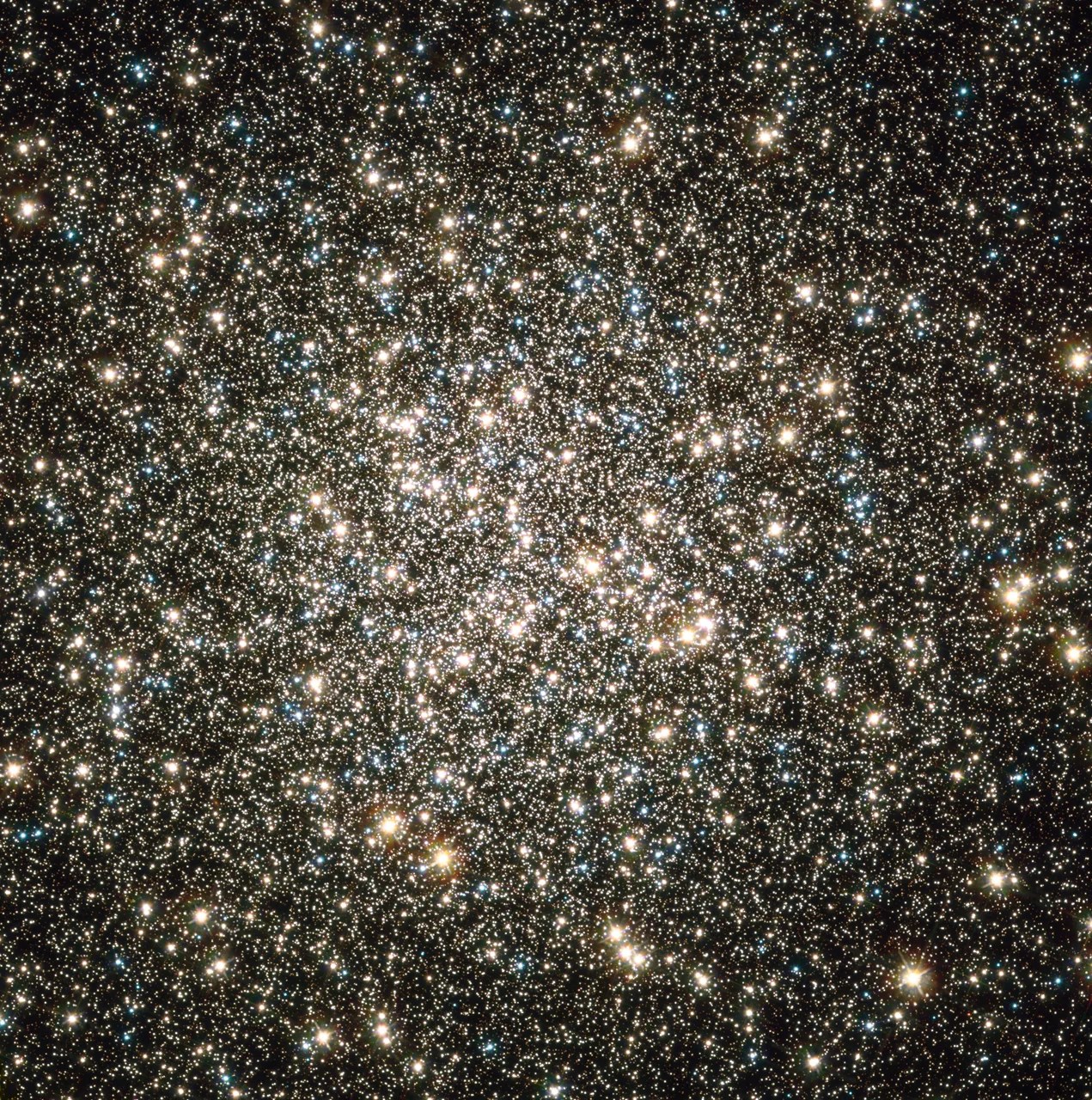If you’ve always wanted to witness a stellar explosion, your time is about to come. T Coronae Borealis, also known as T CrB (pronounced tee-core-bore) or the “Blaze Star,” is on the precipice of a massive explosion — one that should be visible from Earth. According to calculations by Brad Schaefer, Professor Emeritus of Astronomy at Louisiana State University, along with data from amateur astronomers affiliated with the American Association of Variable Star Observers (AAVSO), the nova should occur within a few months of May 2024. T CrB is a binary…
Read MoreMonth: July 2024
See the sun rage behind the ISS in epic time-lapse photo
Miguel Claro is a professional photographer, author and science communicator based in Lisbon, Portugal, who creates spectacular images of the night sky. As a European Southern Observatory Photo Ambassador and member of The World At Night and the official astrophotographer of the Dark Sky Alqueva Reserve, he specializes in astronomical “Skyscapes” that connect both Earth and the night sky. This image shows the silhouette of the International Space Station (ISS) as it crosses in front of the sun’s disk at a distance of 274 miles (441.5 km) from us and at a speed of about 4.5 miles…
Read MoreJuly’s Night Sky Notes: A Hero, a Crown, and Possibly a Nova!
3 Min Read July’s Night Sky Notes: A Hero, a Crown, and Possibly a Nova! Like shiny flakes sparkling in a snow globe, over 100,000 stars whirl within the globular cluster M13, one of the brightest star clusters visible from the Northern Hemisphere. Located 25,000 light-years from Earth with an apparent magnitude of 5.8, this glittering metropolis of stars in the constellation Hercules can be spotted with a pair of binoculars most easily in July. Credits: NASA by Vivan White of the Astronomical Society of the Pacific High in the…
Read More

